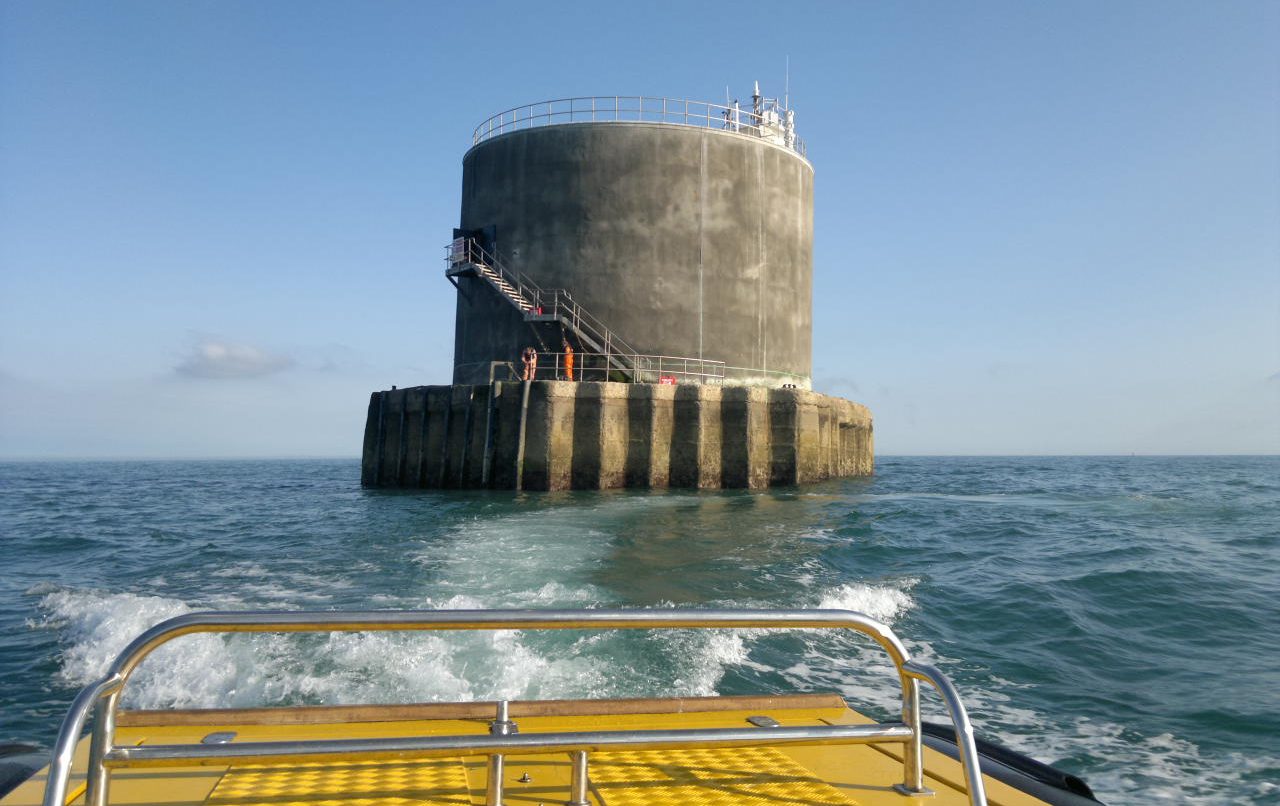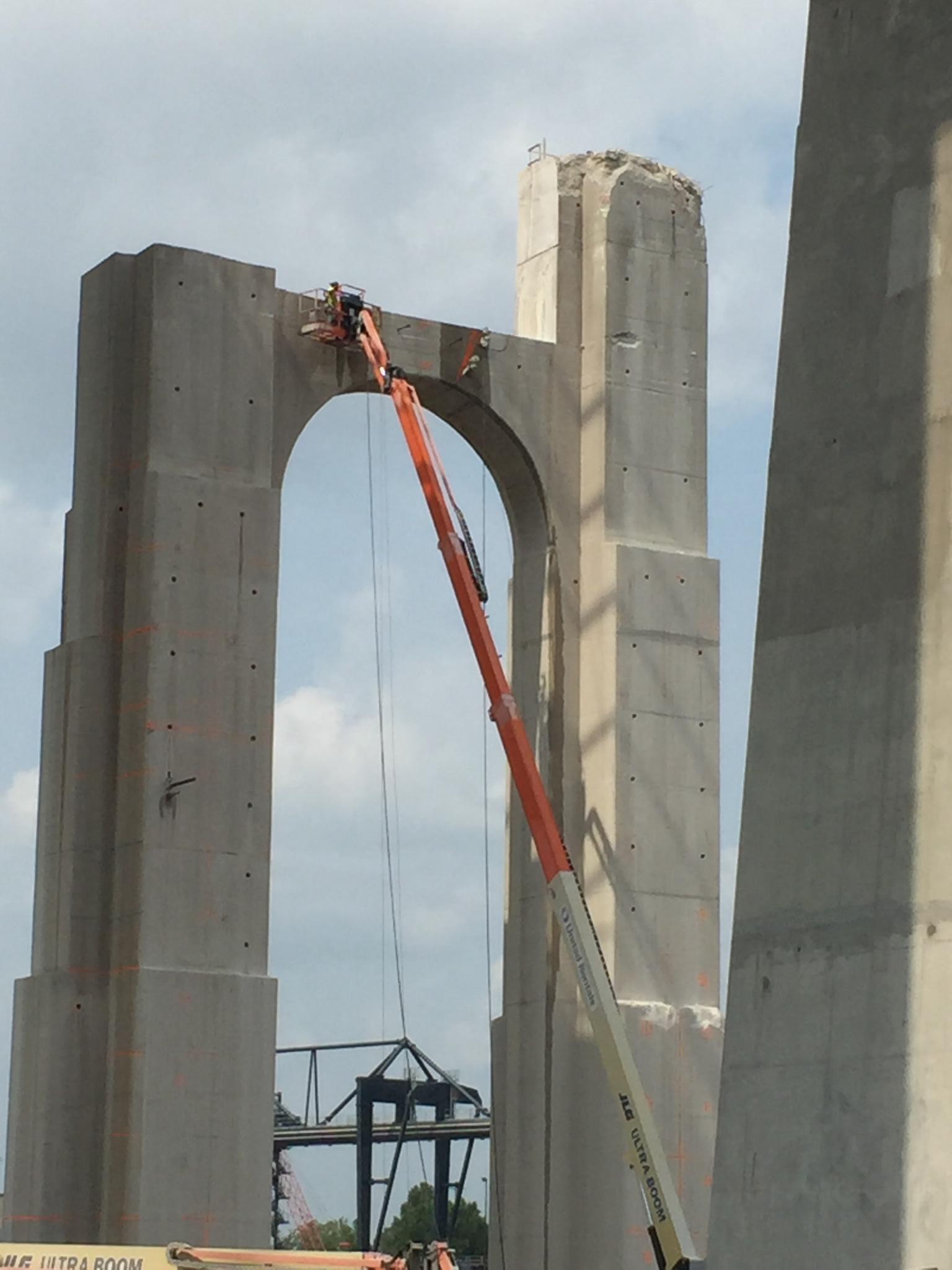
Kwik Turnaround Time for Kwikcore at the Georgia Dome
When the Georgia Dome opened in 1992 at a cost of $214 million, at the time, it was one of the largest state-funded construction projects in Georgia history. The stadium seated 71,228 for football, approximately 80,000 for concerts and 71,000 for basketball when its retractable dome was fully open. The Georgia Dome was designed with a half-mile long concrete ring beam that wrapped around the roofline, a one-of-a kind structure at the time. When it made its debut, it was the second-largest covered stadium in the world by capacity, second only to the Pontiac Silverdome. In its 25 year lifespan, it hosted over 1400 events that were attended by over 37 million people.
However, nothing lasts forever, especially in professional football. In 2010 plans for a new stadium just south of the Georgia Dome were announced with ground breaking and construction scheduled to commence in 2014. The most obvious challenge for the demolition of the old Dome was that it sat sandwiched between Atlanta’s major convention center and the new $1.5 Mercedes-Benz Stadium—just 83 feet away!

The Kwikcore drill allowed for faster drilling of holes
Demolition experts said that a single implosion would be the best method to take the Dome down, with explosive charges placed in the ring as well as the support columns, all timed to cripple the ring beam and the columns. The pressure created by the implosion would have to rise into the roof and not out through the sides. The explosives had to be perfectly timed so as not to damage the adjacent structures.
Construction felt was placed over four corners of the Dome and a 70-foot-tall fence covered with the same felt was erected between Mercedes-Benz Stadium and the Dome. In addition, to make sure that the roof fell in place during the implosion, parts of the concrete ring that supported the roof were chipped away and ventilation holes were cut into the roof.
Pettigrew Construction, the general contractor, needed the service of a specialized core driller with precision drilling experience, and as it turned out, customized equipment, to core 1850 holes for the explosives that would take down the Dome. Pettigrew hired CSDA-member Exco who pioneered the development of the Kwikcore drilling system. The anchorless, remote-controlled core drill attachment is able to turn a core drill into a marvelous machine, able to drill 4 holes in one hour compared to four holes in a day. Diamond drilling was chosen over the more commonly used carbide drilling as there was a large quantity of rebar present in the concrete and using carbide drills would have slowed the drilling process significantly.
The time to core these holes kept getting pushed closer and closer to the target date of implosion, as other construction delays were slowing the project. Originally scheduled for the summer of 2017, the coring actually took place over a four-week period during the fall of 2017, quite close to the actual implosion date of November 17, 2017. So the need to get holes drilled quickly became a critical part of the job.

The Brokk 160 at the Georgia Dome
Another concern for Exco was that these holes ranged in diameter from 1 5/8 inches to 2 1/4 inches but measured 10 inches to 66 inches in depth, a vast difference. Kwikcore was able to custom fabricate a frame to allow the drill to core to a depth of 66 inches. Also custom fabricated were the core bits themselves. The steel core was custom made by Western Saw, with Diteq Corporation diamond segments. These core bits ensured that many of the 66-inch-cores bits came out in one piece due to the structural soundness and the precision drilling of the Kwikcore core drill set-up and the custom diamond drill bits. This is very hard to do as long cores will typically jam inside of a small-diameter bit. Rounding out the custom-fabricated system were core drills provided by Shibuya and the entire set up was powered by a Brokk 160.
Along with the time constraints and the deep holes, another major factor that complicated this job was the fact that the slab was super hard 10,000 psi granite aggregate with 3-inch steel rebar on 45 degree diagonals. Operators also encountered some rubber membrane in various areas of the concrete ring.

Skyline view of the Georgia Dome implosion
The general contractor was amazed at the integrity of the drill pattern to the required depth of 66 inches and remarked on more than one occasion that the anchorless, remote controlled core drill was the perfect piece of equipment for this job.
All in all, Kwikcore core drilled the 1,850 holes, 900 precision holes and 950 additional holes into the concrete ring and additional concrete walls in just two weeks. These holes were drilled by two operators using the Kwikcore K16 and K34 attached to a Brokk 160 which served as the core drill system.
The general contractor was very satisfied with the job done by Exco and Kwikcore given the time constraints, super hard aggregate and depth of the holes. This job was a perfect fit for the automated, anchorless Kwikcore/Brokk customized core drill system.
Company Profile
EXCO/Kwikcore has been a member of CSDA since 2012 and I based in Bensalem, Pennsylvania, servicing the entire Tri-State area. The company was founded in 2007, has six employees and three trucks. A primary focus has been the development of the Kwikcore Anchorless Coring System which is distributed by DITEQ Corporation.
Resources
Sawing and Drilling Contractor
EXCO/Kwikcore
Bensalem, Pennsylvania
Tel: 855-945-2673
Email: fengel@excokwikcore.com
Website: www.excokwikcore.comor














